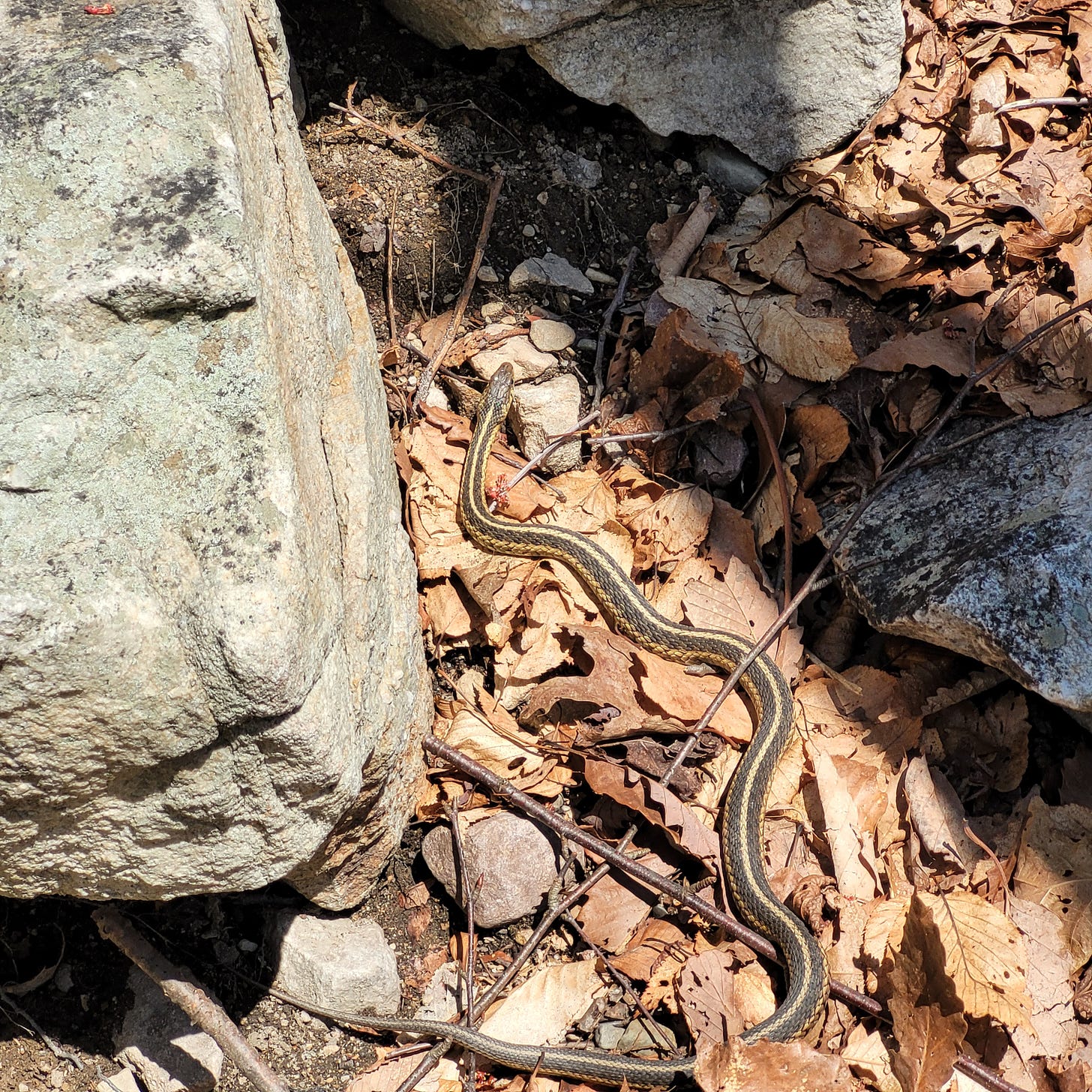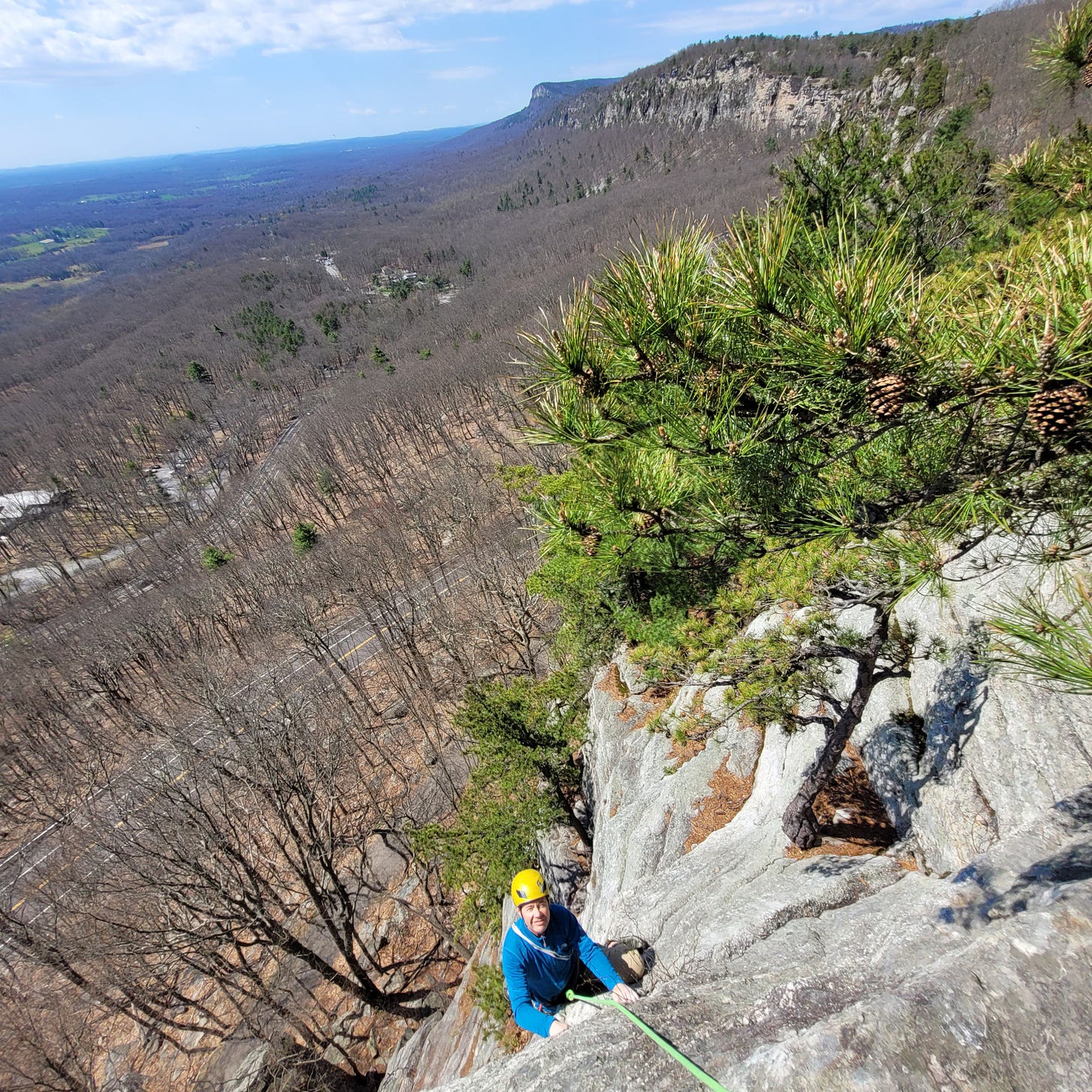I Sometimes Get Lost
A story about making a mistake and the halo effect bias in rock climbing
I’ve always had a good sense of direction. I attribute this to growing up and spending a lot of time walking, bicycling, scootering, and exploring around my childhood neighborhood.
I also spent a lot of time camping and riding dirt bikes in the Mojave desert. Sometimes, I would be gone for hours on a trail ride and know exactly where I was and where I was going in relation to my family’s campsite despite there not being any trail markers.
Whether I was a few blocks away on my bicycle or miles away on my motorcycle, I quickly learned how to read terrain, keep track of landmarks, and remember my navigational sequence.
Eventually, I got really good and not only learned the main thoroughfares to get from point A to point B but also all the detours and shortcuts that brought me to the same destinations.
All of this became extremely helpful as I got into outdoor hobbies like hiking, camping, and backpacking. It also came in handy for rock climbing in three important ways– getting to the route, staying on the route, and getting off the route.
1.) Getting to the route
My sense of direction serves me in rock climbing because it facilitates a faster and more efficient approach to the cliff. Yes, some climbing cliffs are roadside and not that hard to find or others are further away but have fantastic trails and trail signs. (Nonetheless, you’d be surprised where people get lost.)
However, not every climbing destination is close by. Some cliffs require a long hike to get to the base. Generally speaking, the older or more traditional the climbing area is, the more adventurous the approaches are.
For example, in Rocky Mountain National Park's alpine, you have to hike upwards of six miles one way to the base of a rock climb. There are great trails to start, but eventually, you’re navigating backcountry terrain with little guidance but your own.
2.) Climbing the route
My sense of direction also helps when I am on a route. On shorter single-pitch routes, I am able to remember specific climbing sequences and the locations of particular climbing holds. On trad routes, I can also remember what piece of protection goes where.
This skill is helpful not only for my own climbing but also for coaching my friends and clients while they’re on a route.
On longer rock climbs, where the top of the cliff is hundreds of feet away, I rely on my sense of direction to stay on route. Sometimes, I am lost in a rocky abyss, but most of the time, I know when I am trending on track or beginning to get off route.
A lot of my ability to stay on route comes from a good memory and attention to detail. Most rock climbs come with route information, called a topo, that more or less identifies the correct path for climbing. Topos are often a combination of written descriptions of the route, drawings, and photographs.
Over the years, I’ve gotten good at deciphering topos (sometimes from multiple sources, like the official guidebook and online forums like Mountain Project).
A lot of this has to do with my ability to absorb conceptual information from the topo and align it with the physical information directly in front of me. I can look up and identify features, follow reliable, climbable terrain, and avoid sections of bad rock.
3.) Getting off the route
My navigational prowess also helps me get off the tops of rock climbs. For the simplest of climbs, getting off requires a single rappel. Or better, getting lowered by your belayer like in sport climbing.
For rock climbs with more complicated descents, getting off may require a series of rappels, some downclimbing, miles of hiking and scrambling, and sometimes, all of the above.
The tricky part about getting down from a long climb is that you hardly ever descend the exact route you used to ascend. This means you have to find the correct way down.
Sometimes, that involves finding the rappel route that will take you down. Other times, it involves hiking up and over into a new gully system, scrambling down, and hiking back to the base.
For some folks, complicated descents are where things begin to unravel. Most accidents occur on the descent because people are tired. Their tiredness translates into complacency, which can cause a consequence, sometimes only a minor inconvenience, and other times, a catastrophe.
In addition, some climbers get into trouble because they spend all their prep time memorizing how to get up and forget to think about how to get down. (I wrote an article in Climbing Magazine about this exact thing.)
Alas, I Sometimes Get Lost Also
Despite having just spent 788 words describing how excellent I am at navigating, I must admit that I sometimes get lost. I was reminded of this just last month when I was out climbing with a great client named Ted. (Yes, we have the same name, and it’s awesome.)
Ted is a competent follower, but he is also learning to lead. So when we climb together, Ted will take the sharp end. On this particular outing, we went to do a route called Easy Overhang (5.2.) It’s an adventurous two-pitch climb with a wide, body-swallowing crack on the first pitch and an airy traverse on the second pitch through an “easy” overhang.
After locating the route, Ted racked up and led the first pitch. When it was my time to climb, I followed the pitch and cleaned his gear. I was impressed with his climbing and gear placement decisions.
When I arrived at the anchor, I looked up toward the rest of the climb and pointed at what I thought was the next corner system that eventually traverses and goes through the easy overhang. I explained that’s where Ted would be leading next.
But I was wrong.
A fellow guide climbing with their own client was within earshot of Ted and I’s conversation. Having heard me explain the wrong route, he politely jumped into the conversation and corrected me. He explained that the corner system I described was a different, much harder route and that our route actually goes a different way.
After his explanation and after having looked up at the cliff a second time, I understood my mistake and realized we weren’t where I thought we were on the climb. I was also mega embarrassed, not only because I felt like I led Ted astray but also because a colleague was there to witness it.
So, Why Did I Get Lost?
Besides just general imperfection, I chalk my mistake up to the fact that my guiding is a little rusty after the winter. I got complacent and lost track of where we came from and where we were headed. The same thing occurred when I got slightly turned around on a walk-off descent with Ted earlier that morning.
Not to mention, it’s only my second season in the Gunks. I am still learning a lot of details and nuances about the cliff. Simply put, I overestimated what I thought I knew.
Excuses aside, what happened with Ted was a valuable learning experience for me. It reminded me that while I think I know what I am doing, there’s still a chance that I am wrong. (And that there is someone out there who knows more than me.)
Most importantly, it reminded me to spend a little more time on the ground getting reacquainted with the topo of a climb I haven’t done in a while, especially if my client is planning on leading.
The Halo Effect in Rock Climbing
My day out with Ted reminded me of an interesting concept from psycology–the halo effect bias. According to Simply Psycology,
The halo effect refers to the tendency to allow one specific trait or our overall impression of a person, company or product to positively influence our judgment of their other related traits.
A common example of the halo effect in normal life is assuming that someone is a good or friendly person because they are handsome or beautiful. Then because you’ve coined them as good or friendly, you will continue to attribute positive traits to them without ever knowing that they are true.
The halo effect bias is present in recreational rock climbing partnerships all the time. Oftentimes, the least experienced partner wholeheartedly trusts the more experienced partner. When a decision needs to be made, the experienced partner’s opinion trumps the other. Or if a problem arises, it’s up to the more experienced climber to solve it.
What occurred to Ted and me is another example of how the halo effect plays into climbing, especially in a guide-client relationship. Because I am the guide, I must be the most knowledgable, safest, and strongest person.
Or since I’ve been correct about where we rock climb in the past, I must be correct all the time. Therefore, Ted can follow along without question.
Most of the time, this is true. But obviously not all the time. Guides sometimes make mistakes also.
However, so long as the decision making up to that point has been sound, and there is a system for double checks, or a backup or plan B, the mistake typically results in inconvenience rather than catastrophe and can be remedied without too much consequence.
Okay, What Happened– Did We Send?
After my minor kerfuffle, Ted and I decided to climb the harder of the two options anyway. We swapped leads, and I went up first. It was an excellent pitch of corner climbing with some stemming and laybacking and an exciting finish.
After we got back down to the ground, Ted was psyched– he was proud of his lead on the first pitch and really enjoyed the harder climbing on the second pitch.
As the saying goes, all is well that ends well.
Nonetheless, I can’t help but imagine what might have occurred if Ted cast off up the wrong pitch of climbing because of my navigational mistake. Fortunately, knowing Ted and his climbing, I think we would have been fine but perhaps a little more thrilled than we expected.







Hey that's me!